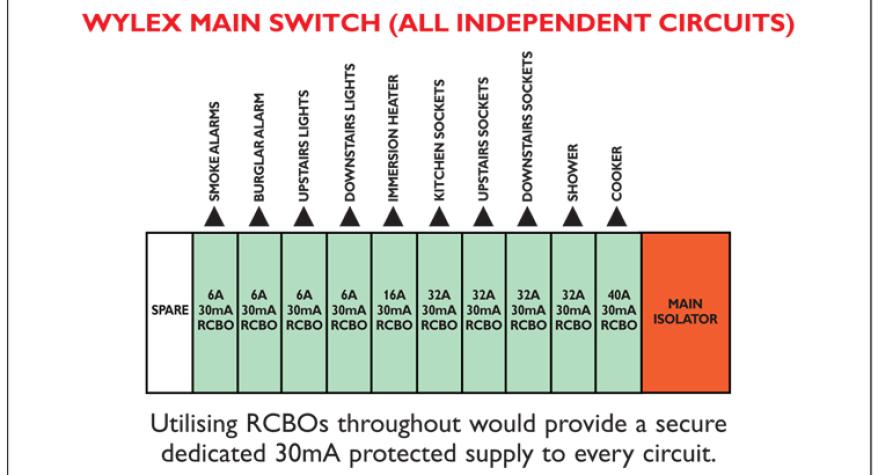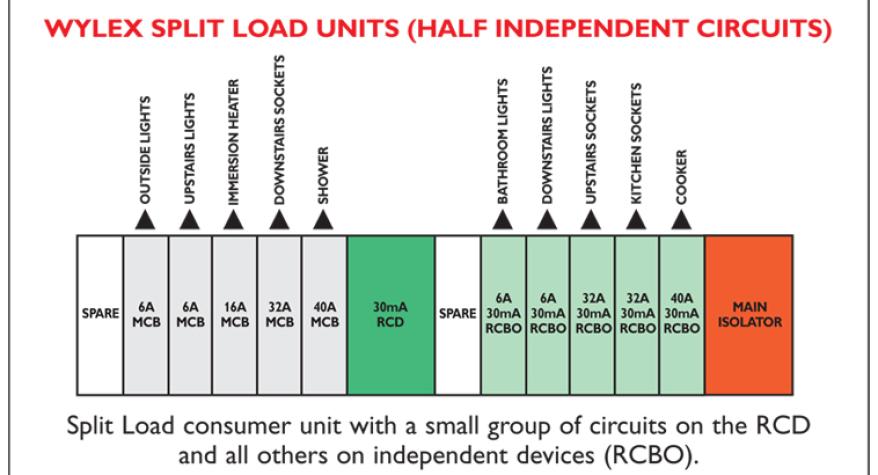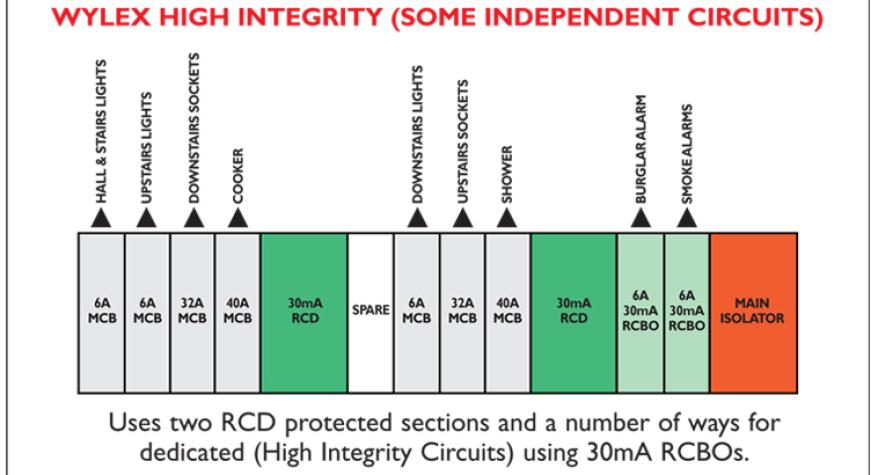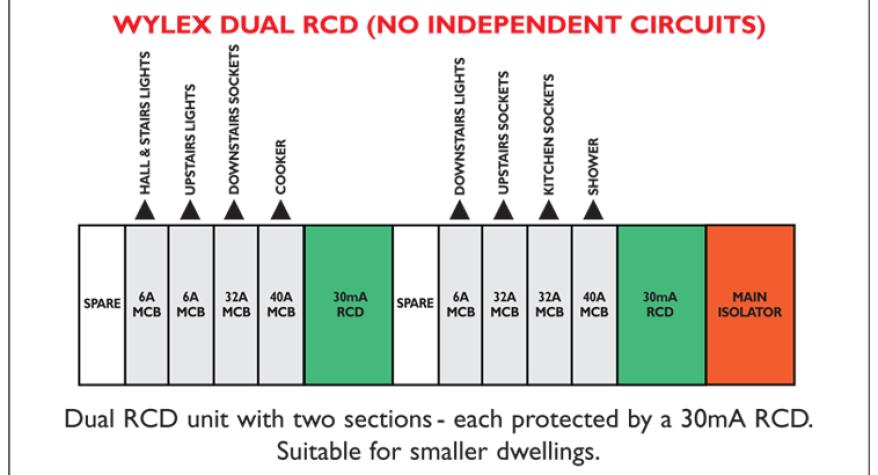Consumer Unit Configurations
The 17th Edition of The Wiring Regulations (Amendment No. 3) has brought about the requirement for domestic consumer units to be of all metal, non combustible construction. This is in addition to the existing requirements for protection by a 30mA Residual Current Device (RCD) for most circuits in a domestic setting.
This 30mA RCD protection can be achieved in many ways. Listed below are four examples of different configurations that achieve different levels of protection.
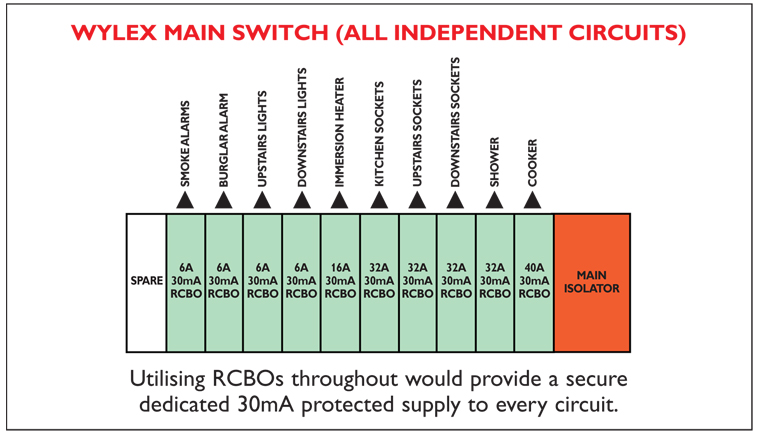
With an ‘all independent’ consumer unit each circuit is fed from its own circuit breaker with a built-in residual current device (RCBO). This means that if a fault causes the RCBO to trip, it will only disconnect the circuit with the problem and all the others will carry on as usual. This is the ‘Rolls Royce’ configuration of a consumer unit incorporating RCD protection and as such costs more than a standard set-up to supply and install.
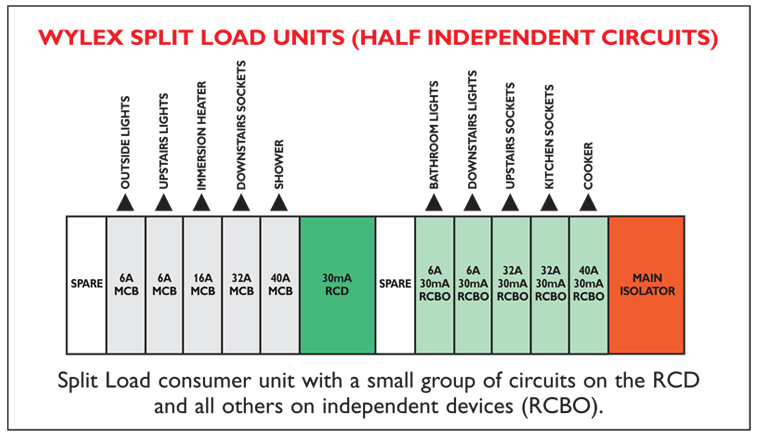
With a ‘half independent’ consumer unit, half the circuits are fed from their own independent RCBO’s and the second half are fed from independent MCB’s but which are protected by a single RCD. If one of the independent circuits on the first half of the consumer unit develops a fault and trips that circuits RCBO then only that circuit will be disconnected from the supply and the other independent circuits will be fine as well as the circuits on the second half of the consumer unit that are on the single RCD. If any of the circuits on the second half of the consumer unit develop a fault that trips the RCD protecting them all then they will all be disconnected from the supply but the independent circuits on the first half of the consumer unit will not.

With a ‘some independent circuits’ consumer unit, the consumer unit is split in half with one half protected by one RCD and the other protected by another RCD. There is also room for some independent circuits which are not protected by either of these RCD’s but are on their own individual RCBO’s. If either of the two RCD’s trip they will disconnect all the circuits connected to that RCD but not the other one or the independent circuits. If one of the independent circuits trip they will only disconnect that circuit and no others.

A ‘no independent circuits’ consumer unit is the standard domestic consumer unit configuration that is generally used the most and is the most cost effective. It splits the consumer unit into two halves. Each half having an RCD protecting multiple circuits. This means that a circuit that trips one of the RCD’s would also mean the disconnection of all the circuits connected to that same RCD. The other side of the consumer unit connected to the other RCD would stay energised thus preventing all the installation from being disconnected.
Plugs Electrical Services will be able to advise you on the most suitable consumer unit configuration based on your needs. If you have important circuits that would cause problems by being disconnected due to a fault on another circuit such as important IT or medical equipment, then keeping that circuit independent from the others would be advantageous.
Contact Plugs to discuss a consumer unit upgrade by clicking here.

